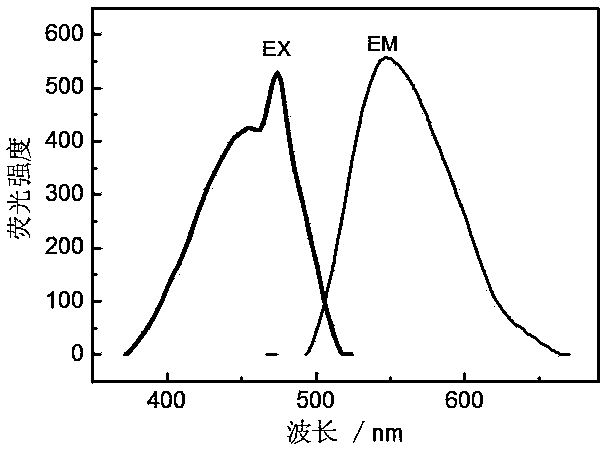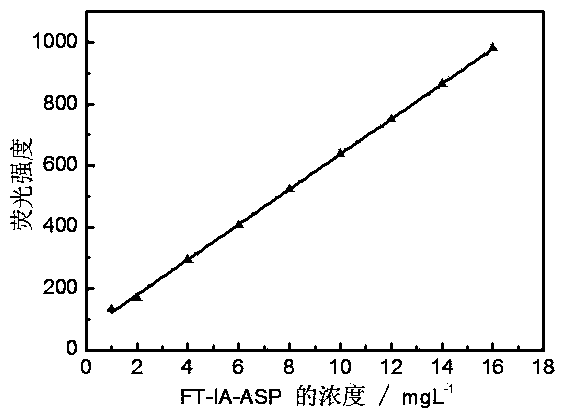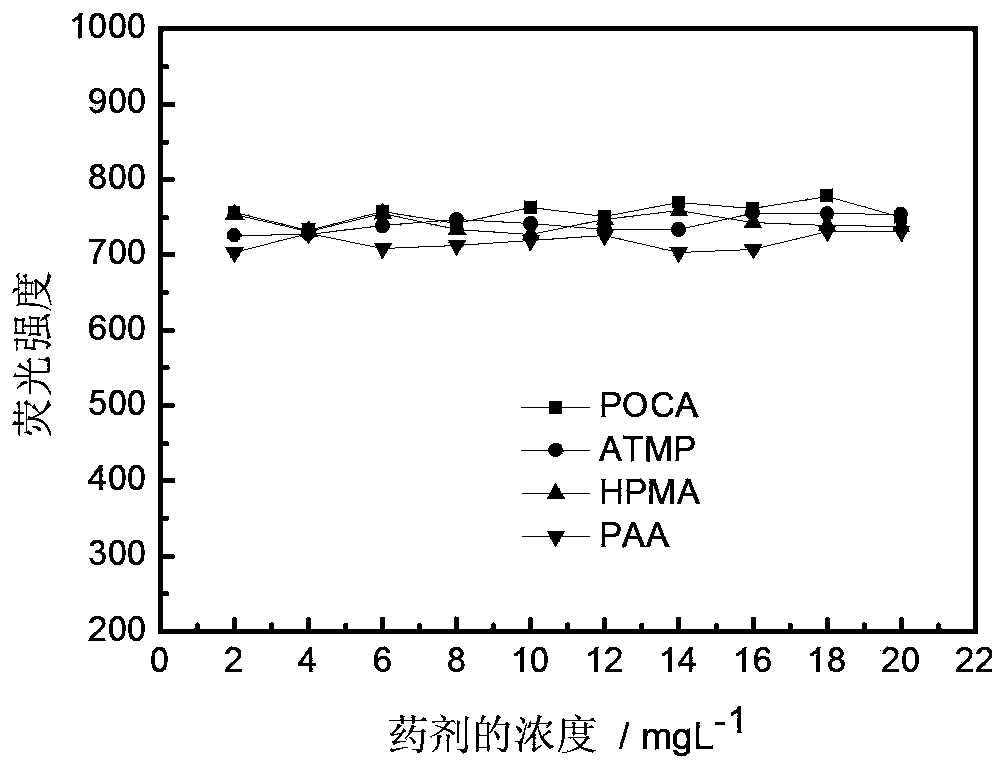Fluorescent tracer itaconate aspartic acid copolymer and its preparation method and application
A technology of itaconic acid aspartic acid copolymer and itaconic acid aspartic acid, which is applied in the directions of fluorescence/phosphorescence, chemical instruments and methods, luminescent materials, etc., can solve the limitation of development and application, rare and difficult reaction raw materials and other problems, to achieve the effect of online dosing, simplifying on-site operations, and improving management level
- Summary
- Abstract
- Description
- Claims
- Application Information
AI Technical Summary
Problems solved by technology
Method used
Image
Examples
Embodiment 1
[0031] Example 1 Weigh 10 g (36.09 mmol) of 4-bromo-1,8-naphthalene anhydride into a three-necked flask, add 30 mL of ethanol, stir slowly, and drop N,N-dimethyl-1,3-propanediamine 9.1 The mixed solution of mL (72.18mmol) and 20mL ethanol was dripped in half an hour, and slowly rose to reflux temperature at the same time, followed by thin-layer chromatography until the reaction was completed, cooled and filtered to obtain a yellow solid, and recrystallized from ethanol to obtain the target product ( I).
[0032] Weigh 5 g (13.84 mmol) of the product (I) generated above in a three-necked flask, add 20 mL of ethylene glycol methyl ether, stir slowly, add dropwise a mixture of 2.7 mL (27.7 mmol) of n-butylamine and 10 mL of ethanol, and simultaneously Slowly rise to 130°C, followed by thin-layer chromatography until the end of the reaction, suction filtration under reduced pressure to remove excess ethylene glycol methyl ether, DMF recrystallization, to obtain the target product ...
Embodiment 2
[0034] Example 2 Put 40mL of deionized water, aspartic acid 9.3g (0.28mol), sodium hydroxide 0.16g and fluorescent monomer (FT ) 0.3g, heated up to 80°C under stirring, passed nitrogen to remove oxygen, and under the protection of nitrogen, added dropwise 15g of 30% hydrogen peroxide solution (accounting for about 10% of monomer mass), 50mL of itaconic acid solution (Containing IA 36.4g, 0.28mol), dripping finished within 2h, continued to keep warm for 1h, cooled and discharged to obtain the product FT-IA-ASP (brown liquid) of the present invention.
[0035] The excitation wavelength and emission wavelength of the polymer are similar to those of the fluorescent monomer, which are also 474nm and 554nm respectively. figure 1 , that is, the wavelength does not shift after polymerization. At the same time, the concentration of the polymer and the relative fluorescence intensity have a good linear relationship, the linear correlation coefficient is 0.99968, and the detection limit...
Embodiment 3
[0037] Example 3 The static scale inhibition method was used to evaluate the scale inhibition performance of the fluorescent polymer on calcium carbonate. The test conditions are as follows:
[0038] Temperature: 80°C; Drug: the product of Example 2; Dosing concentration: 2, 4, 6, 8, 10, 12, 14, 16, 18, 20mg·L -1 ;Test time: 10h; Test configuration water: Ca 2+ 250mg·L -1 , HCO 3 - 250mg·L -1 (both CaCO 3 Calculated), the concentration factor is 1.5 times; at the same time, do a blank experiment without adding medicament. According to this method, the dosage of the drug is 12mg L -1 , the scale inhibition rate to calcium carbonate is 96.1%. see attached results Figure 4 .
PUM
| Property | Measurement | Unit |
|---|---|---|
| scale inhibition rate | aaaaa | aaaaa |
Abstract
Description
Claims
Application Information
 Login to View More
Login to View More - R&D
- Intellectual Property
- Life Sciences
- Materials
- Tech Scout
- Unparalleled Data Quality
- Higher Quality Content
- 60% Fewer Hallucinations
Browse by: Latest US Patents, China's latest patents, Technical Efficacy Thesaurus, Application Domain, Technology Topic, Popular Technical Reports.
© 2025 PatSnap. All rights reserved.Legal|Privacy policy|Modern Slavery Act Transparency Statement|Sitemap|About US| Contact US: help@patsnap.com



